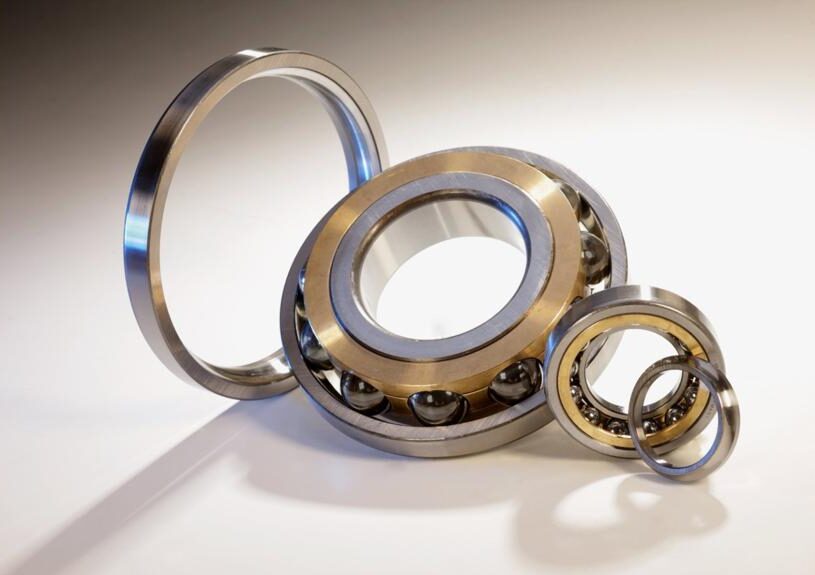Revolutionizing Precision – Technological Advancements in Pakistan Bearings Industry.
Introduction:
Bearings Industry Technological Advancements Of Pakistan. The bearings industry in Pakistan is not an exception. Technological advances are driving transformational changes throughout industries around the world. Innovations in materials, manufacturing methods, and digital technology are changing the face of bearing production. From ball bearings to roller bearings, and specialized designs. This article explores the technological advances in Pakistan’s Bearings Industry, including key innovations, their impacts, and prospects.

Bearings Industry Technological Advancements Of Pakistan Materials Innovation:
High-Performance Alloys.
The development of high-performance alloys that are corrosion-resistant, durable, and have superior strength has been made possible by advances in metallurgy. These alloys are ideal for bearing applications.
Materials like stainless steel, chrome steel, and hybrid ceramics provide enhanced performance under demanding conditions such as high temperatures and corrosive environments.
Composite Materials.
Composite materials that are made up of polymers, fibers, and additives are becoming more popular in the bearing industry due to their self-lubricating and wear-resistant qualities.
Fiber-reinforced Composites, thermoplastics, and polymer matrix materials offer benefits such as reduced friction and noise and low maintenance requirements. They are suitable for a wide range of industrial applications.
Bearings Industry Technological Advancements Of Pakistan Advanced Manufacturing Processes:
Precision Machining.
Precision machining methods, such as CNC (Computer Numerical Control), grinding, and honing techniques, allow the production of bearings that have tight tolerances and smooth surfaces.
Automated machining equipped with high-speed cutting tool and multi-axis capabilities enhances bearing production productivity, accuracy, and repeatability.
Additive Manufacturing (3D printing):
Bearing design and production can be revolutionized by adding manufacturing techniques such as fused deposition modeling (FDM) and selective laser sintering.
3D printing facilitates innovation and flexibility by allowing for complex geometries and customized designs.
Surface Coatings & Treatments:
Nano Coatings.
Composed of thin layers such as diamond-like graphene (DLC) or DLC enhance the surface hardness and wear resistance of bearings.
These coatings are designed to reduce friction and wear and prolong bearing life in high-speed, high-load applications.
Thermal Treatments.
Such as heat treatment, surface hardening (carburizing, nitriding), and other processes improve mechanical properties and wear resistance.
Improve bearing performance and reliability in harsh environments by optimizing microstructure and surface toughness.
Smart Bearings and Condition monitoring:
IoT Integration.
The integration of IoT sensors and connectivity allows for real-time monitoring of bearing conditions and performance.
Smart bearings with sensors that measure temperature, vibration, and lubrication provide data to help predict maintenance and optimize asset management.
Predictive analytics.
Algorithms based on advanced analytics and machine learning analyze sensor data to predict bearing failures and identify abnormal operating conditions. They also optimize maintenance schedules.
Predictive Maintenance Strategies based on Data-driven Insights enhance equipment reliability, safety, and efficiency while minimizing unplanned maintenance costs and downtime.
Future Prospects and Emerging Technology:
Quantum Bearings.
Technologies such as superconducting bearings and quantum levitation could lead to breakthroughs in frictionless movement and energy efficiency. Transitioning from these advanced technologies to cutting-edge research, the research and development of quantum bearings aim to revolutionize industrial applications such as high-speed transport systems, precision instruments, and renewable energy production.
Moving on to bio-inspired designs, these designs draw inspiration from nature to create innovative bearings with superior performance and durability. Modeled on biological structures like joints, tendons, and muscles, they offer many benefits, including self-healing and adaptability.
Conclusion:
The technological advancements in Pakistan’s bearings sector are propelling it into a new age of precision, efficiency, and innovation. Transitioning from this transformative phase to the industry’s embrace of cutting-edge technologies, the industry leverages advanced materials and manufacturing methods to predictive analytics and smart technologies.
Pakistani-bearing producers can improve product quality, performance, and competitiveness by leveraging technological advancements. With these advancements, they will become key players in the global market.
0 Comments